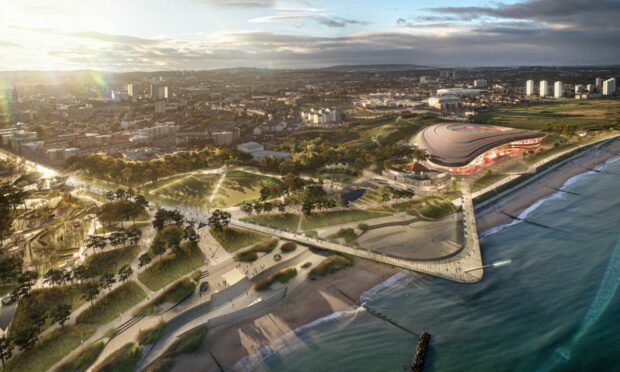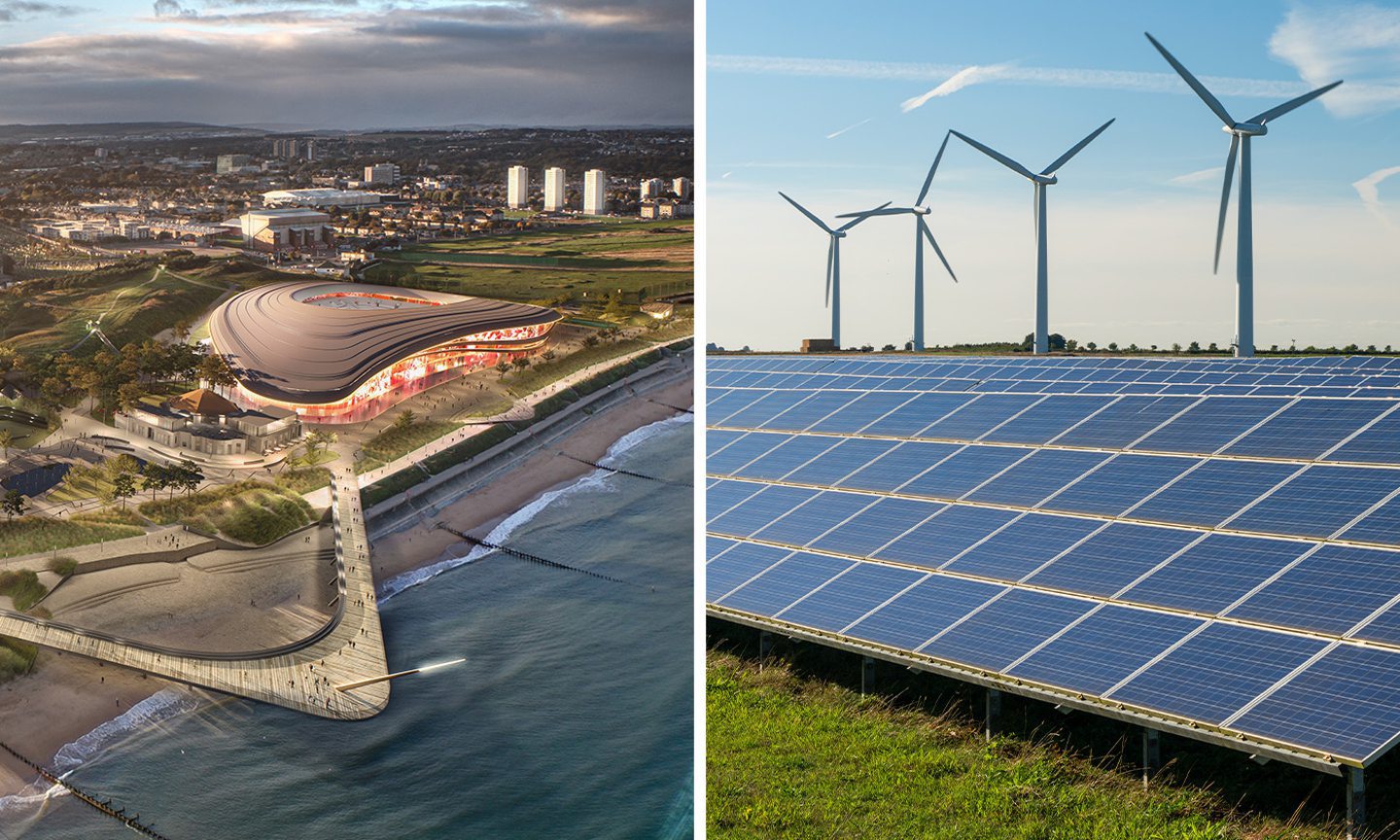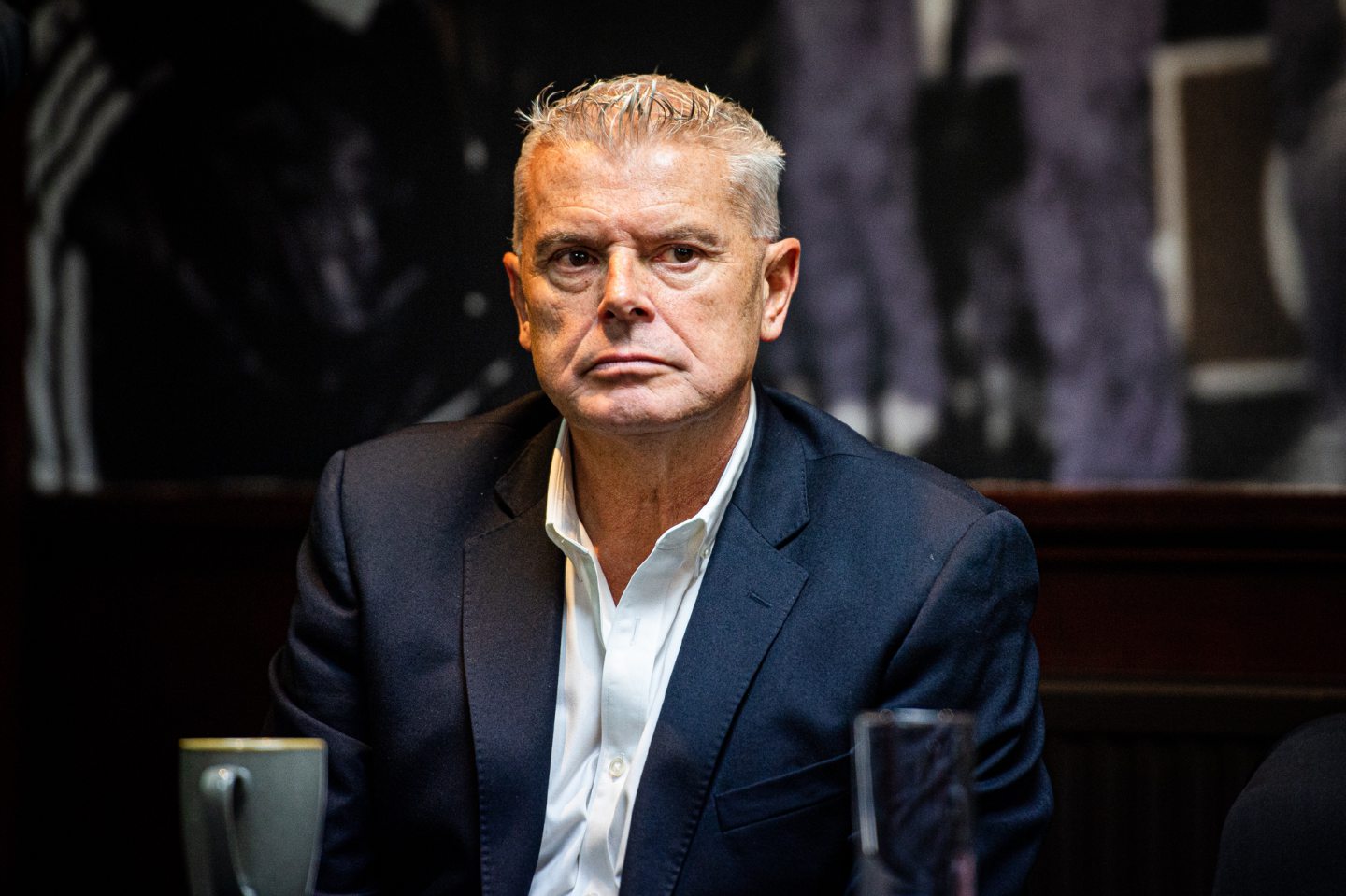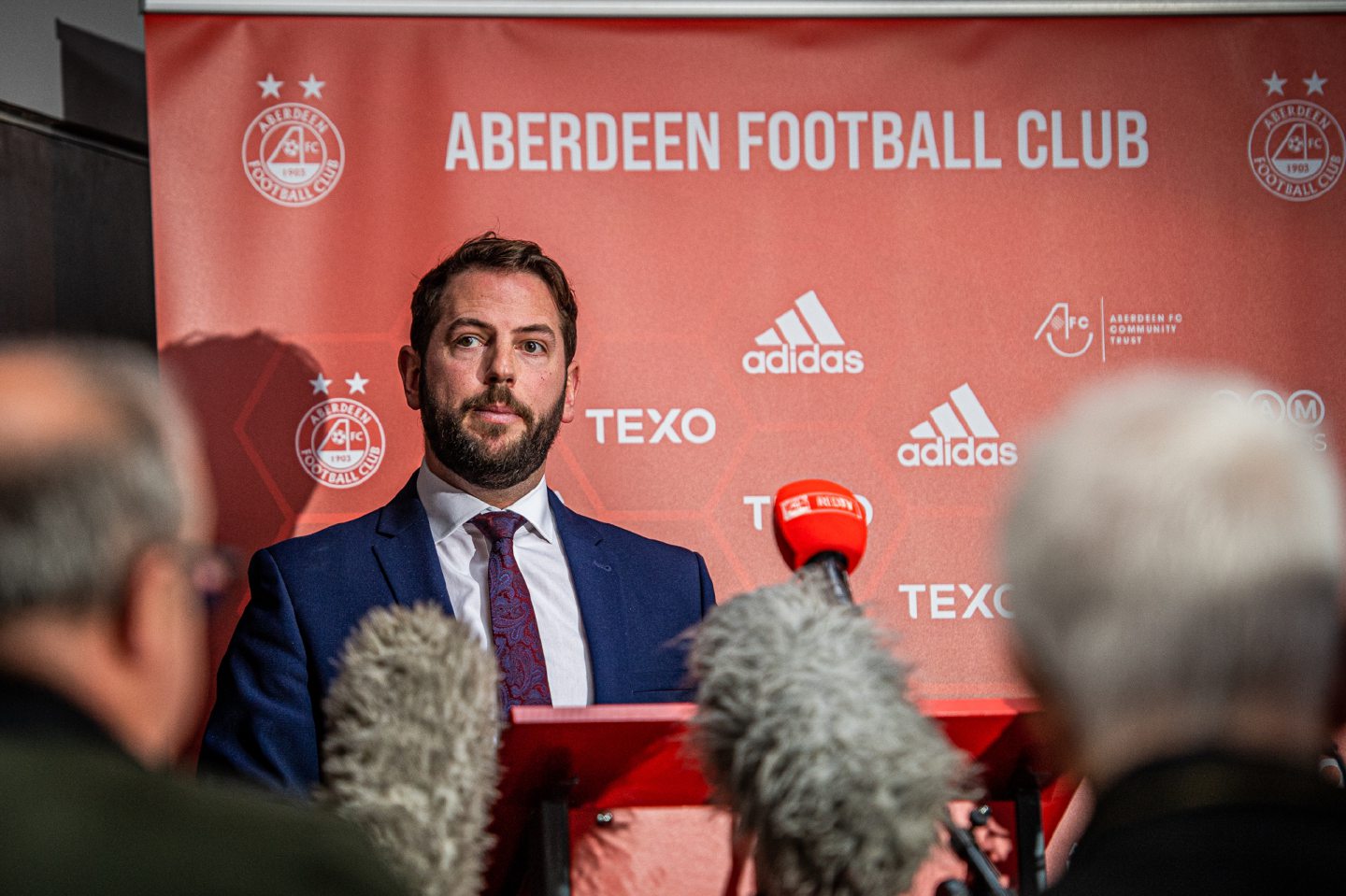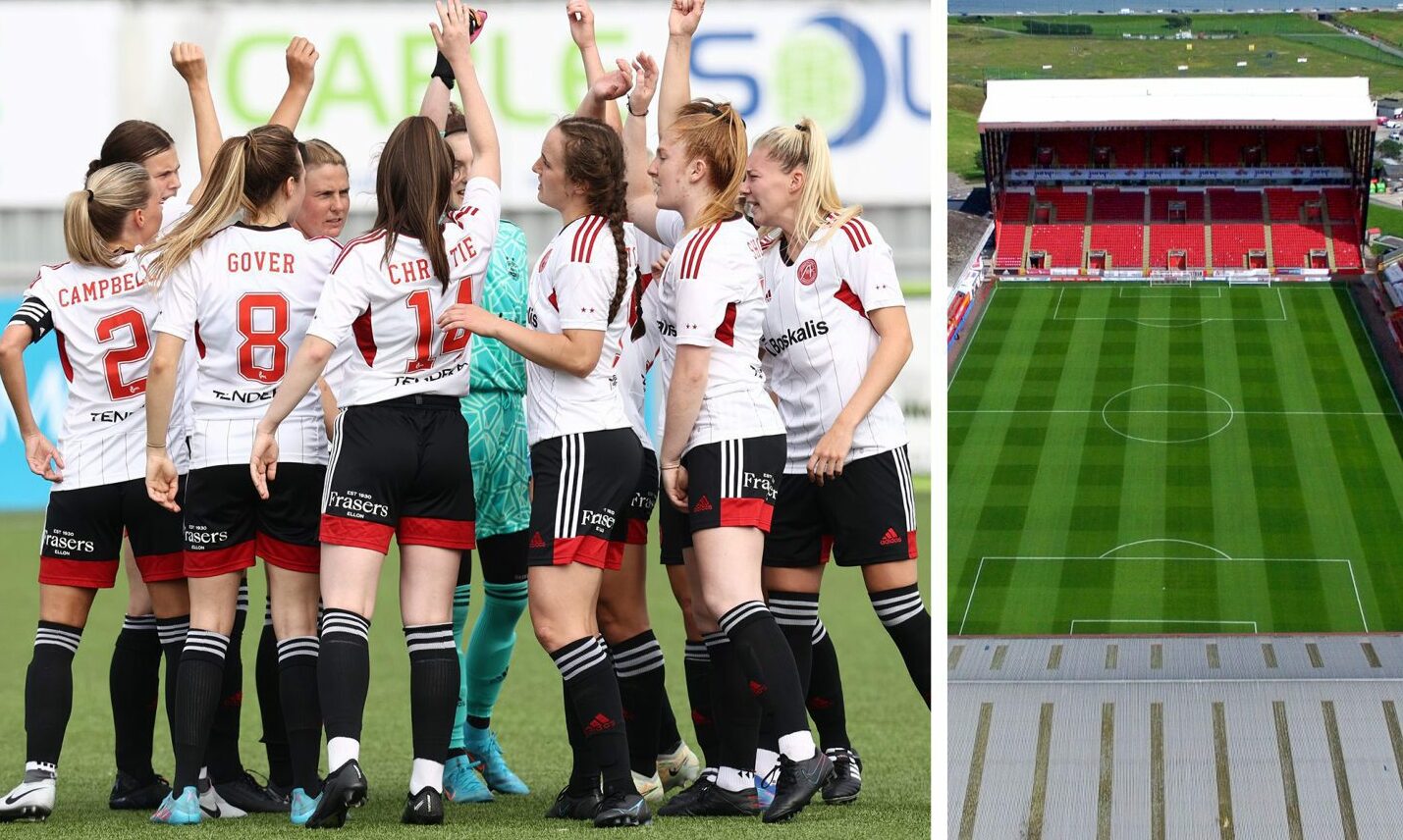Picture the scene a few years hence: a community stadium at Aberdeen Beach, with a rich variety of restaurants, cafes, conference amenities, leisure facilities, community support and education sessions and walkways to other attractions such as the Beach Ballroom.
Stadium use expanded for women’s football, the potential for a rugby team, and attracting both men’s and women’s internationals on a much more regular basis.
Elsewhere, with significant access throughout the all-purpose stadium, there are mental health sessions for anybody in the community who might be struggling, Football Memories events for those with dementia, STEM education classes for schoolchildren and eating places serving food all day, arts installations promoting local creatives… all in a net-zero environment at the heart of the city as it moves towards the 2030s.
This is the philosophy behind a new stadium at Aberdeen beach, which is forecast to inject at least £1bn into the local economy over the next 50 years. It’s a world removed from the old-fashioned notion of a football arena being open for around four or five hours every fortnight, while it sits in darkness the rest of the time.
Yet, that’s the whole point of the masterplan for the beach area which has recently been unveiled by Aberdeen City Council and the Pittodrie club’s chairman, Dave Cormack; it’s not just about sport or revenue streams, but a completely new way of looking at what is an increasingly dowdy, dilapidated part of the post-oil landscape.
The local authority approached Cormack in the first place. From his perspective, he could simply proceed with the club’s long-mooted relocation to Kingsford, which would mean the Dons leaving the city after being at Pittodrie since 1903. But, as he argues, when you look at the deteriorating state of Union Street, with the loss of such leading names as John Lewis, Debenhams and, potentially, Marks & Spencer, allied to the closure of the Belmont Filmhouse and the problems faced by Aberdeen Performing Arts, Scotland’s third biggest city needs a radical transformative scheme in response.
Is this just another pipe dream?
The question, though, is will this be the solution or simply turn out to be another glossily-illustrated road to nowhere? Almost nobody can defend the status quo in Aberdeen these days, with businesses struggling, footfall to many shopping outlets on the slide and people from all sides of the political spectrum calling for a new vision.
The local chamber of commerce has flung its weight behind the stadium expansion, believing its cost of £80m will be repaid 12 times over by 2075. As the organisation’s Fergus Mutch said: “Aberdeen cannot afford to lose the club from the city.
“Retaining Aberdeen FC in our city centre is becoming more critical as uncertainty grows around the future of two of our shopping centres and Union Street falls further into decline. Public finances are being squeezed like never before, but we must invest in capital projects like this which will enhance our city and secure our future prosperity.”
For his part, Cormack is proud of his Granite City heritage and told me he was almost in tears after witnessing the decrepit nature of the place on a recent return home. Fifty years earlier, following the discovery of oil and gas in the North Sea, the sky was the limit as workers arrived from every corner of the globe in a cosmopolitan melting pot.
But nowadays, the boom has bust, or at least in energy terms. So, what’s next? Can a community football venue possibly become the catalyst for a renewable revolution, one designed to make Aberdeen the net-zero capital of the world in the future?
Dundee is kicking our ass just now
Cormack declared: “It pains me to say it, as somebody who is a proud Aberdonian, but Dundee is kicking our ass at the moment. They didn’t have any oil money, but they had bold plans for the waterfront development 25-30 years ago and they have made it happen. Look at the comparison between the two cities: they have better leisure facilities than Aberdeen, they have the V&A, they have retail expansion and they have made significant steps forward in regenerating the city.
“In contrast, there’s nothing on a comparable scale up here, so it’s a no-brainer to form partnerships and move forward together with one coherent vision. There’s no point in the council building a new leisure centre, or ice rink, or doing up the Beach Ballroom in isolation. It all has to be part of a bigger, more ambitious, venture.
“Evidence shows that successful regeneration projects need a centrepiece. And I’m convinced that a new, net-zero, sea-facing stadium would drive the footfall necessary to enable the regeneration of the beachfront, including a potential urban park, the refurbishment of the Beach Ballroom and the creation of superior leisure facilities so that the area becomes a true destination….and one of which we can all be proud.”
Similar developments have happened elsewhere, though hardly on the same scale. Jock Gardiner, a member of the AFC Heritage Trust, has travelled to myriad grounds across Britain and Ireland and pinpointed the transformations they have undergone.
He said, in reference to Brentford’s new community stadium: “I had visited the old Griffin Park: it was smaller than, but not dissimilar to, Pittodrie in that it was an old school ground with character, but facilities fell behind what is expected these days.
“The new stadium is a stone’s throw away on a previously non-utilised brownfield site and a 17,500-seat capacity stadium has been built, including rail seating for a safe standing environment. Non-matchday usage is much higher with good community engagement and educational/learning facilities and other sporting usage.
“New housing, in the form of flats, forms part of the site, which is also home to London Irish rugby union club. It still has a great atmosphere like the old ground.
Football must broaden its horizons
“We also visited Tallaght, the home of Shamrock Rovers, which is owned and run by South Dublin County Council as part of our Emerald Isle tour. The new development has excellent access for disabled and less mobile spectators and provides other sporting opportunities on site (namely American Football and archery).
“There was access to [a range of] youth and community clubs and good retail and catering facilities to the wider community outwith matchdays was also apparent.”
The wider community benefits of a new venue as the anchor for wholesale beachfront construction, including the opportunity to attract major international professional sports events and increase local sports programmes, have been laid out in detail.
But it boils down to the crux: does Aberdeen have the belief, the confidence, the faith and the joined-up thinking to go where their counterparts did on Tayside?
As Cormack said: “If Aberdeen wants to put itself on the map again, it has to choose this project and get 100% behind it. The beach used to be one of our shining jewels. Now, it is run down and a shadow of what it once was. So we need to move forward.”
Over to you at the council.
